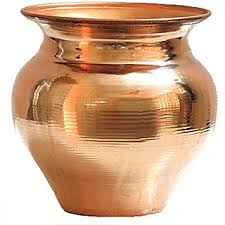Abraham Eraly has written some of my favorite books on Indian history, specifically his works on the Mughal Empire (‘Emperors of the Peacock Throne’ and The Mughal World). I picked up The Age of Wrath recently, which is about the period of medieval Indian history that begins with the onset of the first Muslim rulers of Northern India, referred to as the Delhi Sultanate. The book however goes beyond merely talking about the rulers of Delhi – it also covers the Bahmani Sultanate in the Deccan, as well as the Hindu rulers of the Vijayanagar empire down South.
Like always, a good history book informs one about the present by defogging the past. Reading this book, in particular, was an eye-opening exercise because the facts that Eraly presents are at complete odds with the gilded, agenda-oriented history that I had been fed about that time period through textbooks and popular fiction.
One would have expected that the Turkish invasion would awaken India from its slumber and stimulate it to transform itself to meet the Turkish challenge. But what happened was the opposite of this: instead of responding to the challenge of Islam, Hindu society curled up tighter into itself. The aggressive presence of Turks in India made virtually no difference in the life and culture of most Indians. Nor did the contact with Hindus make any notable difference in the life and culture of most Muslims. Their civilisations were totally unlike each other in every respect to have any major influence on each other.
Hindu Civilization was in an awful state of degeneration in early medieval times, especially when compared with its marvellous effulgence in the preceding age. This decline affected all facets of Indian civilisation. Culture putrefied. The caste system straitjacketed society, thereby hampering human enterprise and thwarting social progress. Commercial economy collapsed, and India gradually subsided into a stagnant, barely self-sustaining agrarian economy. Towns decayed; many of them were deserted, and they turned into crumbling relics. Instead of the urban sophistication that had characterised the classical Indian civilisation, now, in the early medieval period, crude rusticity characterised it. There was no more any creative energy in Indian civilisation. ‘I can only compare their mathematical and astronomical literature, as far as I know it, to a mixture … of pearls and dung, or of costly crystals and common pebbles,’ comments Al-Biruni.
Besides all this, Turks, as aggressors swooping down from the cool Afghan mountains, had irresistible kinetic energy, while Indians were mostly plains people leading a sedentary life in an enervating climate, and their posture, as defenders, was generally static. Psychologically too Indians were at a disadvantage, as they suffered from the victim syndrome, and were often sluggish in battle, unlike the spirited Turks. Moreover, the fatalistic value system of Indians inculcated in them a generally defeatist attitude. In some cases Indians were also demoralised by astrological predictions that the Turkish conquest of India was inevitable. In contrast, Turks were energised by religious fervour, confident in their faith that they were invincible as the soldiers of their god.
Among my favorite chapters is the one on Ala-ud-din Khilji. This particular sultan is known in Indian history textbooks for one thing and one thing alone – his lust for a Hindu man’s wife. The lady in question is a queen named Padmini, a lady renowned for her beauty and kept in a zenana away from prying eyes by her husband, the Rajput ruler Ratan Singh, who ruled Chittor. Apparently the sultan made a formal request to her husband to allow him a glimpse of her face. This was a breach of propriety that could lead to war, but the mutually amicable solution was that Khilji was allowed to see Padmini indirectly, her face reflected in a mirror. The story goes that the sultan was so taken aback by Padmini’s beauty that he fainted outright. Upon returning to his camp, he put Ratan Singh under arrest, demanding that the queen be delivered to him, and it was only due to the bravery of two of the raja’s chieftains (and a bit of cross-dressing trickery that spices up every good story of abduction and deceit) that the captive made his escape. The story ends badly for the people of Chittor, including the beautiful queen. Ala-ud-din’s army attacked the fort, and the men rushed forth to kill or be killed, presumably to the tune of Mo’s Kamikaze, while the women preferred to kill themselves by jumping into a sacrificial fire.
This story has been the cornerstone of a lot of assumptions about the motivations of the Muslim rulers of the time. But as Eraly writes, this particular anecdote is a work of fiction.
This story is told with many colourful frills in the bardic lore of Rajasthan, but there is no record of it at all in any contemporary chronicle. All that Barani says about Ala-ud-din’s Chitor campaign is that ‘the sultan then led forth an army and laid siege to Chitor, which he took in a short time and returned home.’ In fact, Amir Khusrav’s statement that after taking Chitor, the sultan ordered the ‘massacre of 30,000 Hindus,’ specifically excludes the possibility of jauhar having been performed there on this occasion.
The earliest textual reference to the Padmini episode is in Malik Muhammad Jaisi’s epic Hindi poem Padmavat. This was written in the mid-sixteenth century, nearly two and a half centuries after Ala-ud-din’s conquest of Chitor, and is therefore of doubtful credibility. Moreover, Padmavat is a romance and not a historical work. The story is also mentioned by a few later chroniclers, such as Abul Fazl and Ferishta, but they were obviously just repeating popular legends.
Instead, Eraly goes on to make a statement about Alauddin Khilji that startled me, because I had never expected such a thing.
Ala-ud-din was one of the most extraordinary rulers in Indian history, indeed in world history. He was a radical reformer, and was exceptionally successful in all that he did, though many of his reforms were several centuries ahead of his time.
He bases his theses on the works of historian Al-Barani, who lists ten major achievements of Ala-ud-din’s reign[ref]1/ Cheapness of all the necessities of life; 2/ invariable success in military campaigns; 3/ rout of the Mongols; 4/ maintenance of a large army at a small cost; 5/ political stability resulting from the suppression and prevention of rebellions; 6/ safety on roads in all directions; 7/ honest dealings of the bazaar people; 8/ erection and repair of mosques, minarets, and forts, and the excavation of tanks; 9/ the prevalence of ‘rectitude, truth, honesty, justice, and temperance in the hearts of Muslims in general during the last ten years of his reign’; and 10/ the flourishing of many learned and great men ‘without the patronage of the sultan.’ [/ref], brought about a strange combination of both luck and determination. Because this king – like the other Muslim ruler who would rule from Delhi a few centuries later and be proclaimed ‘The Great’ – was possessed of a particular self-awareness and open-minded outlook that seemed to come of being illiterate.
For example, this was how the sultan dealt with insurgency in his territories. After several days of discussions with his councilors, he concluded that there were four basic causes that lead to rebellions: A sultan’s neglect of public affairs, wine parties held by nobles, alliances among military personnel and noblemen, and an excess of money. He also came up with solutions for each of these causes, the first being off the table because he was a compulsive workaholic. He started with an elaborate intelligence network across the empire to ensure that nothing transpired without the sultan knowing about it, especially in the houses of the emirs and the maliks. He prohibited wine-drinking and selling and prostitution, setting taverns on fire and confining prohibition violators first into prisons and then open pits. [ref]As was to be expected, these rules just increased clandestine consumption of alcohol, making people travel to the suburbs of Delhi to enjoy their drinks or smuggle in their spirits by a hundred different tricks and devices. Ala-ud-din had to eventually modify the rules to prohibit public drinking and parties only. Oh, India and its obsession with alcohol regulation![/ref]He increased taxes, but also paid attention to the corruption prevalent among the hereditary revenue collectors working under him; his solution was to withdraw their privileges and perks, and to punish violators harshly.[ref]This is what Eraly has to say about the state of corruption in medieval India.
One of the most disturbing aspects of the medieval Indian kingdoms was the universality of corruption in them, from the highest to the lowest level. Taking bribes was not a secret, devious act in India at this time, but was done openly, and was widely accepted as the normal and natural state of affairs by everyone. Provincial governors and other high government officials, even the sultan himself, were not above seeking recompense for doing favours, the only difference being that in their case the offerings they received were treated as presents, not bribes. And just as subordinates gave bribes to their superiors to win favours from them, superiors often gave bribes to their subordinates to secure their loyalty, except that these offerings were also called presents, not bribes. Loyalty was invariably on sale in medieval India.[/ref]
But make no mistake, Ala-ud-din was equally as bloodthirsty as any of his contemporaries, maybe even more. “He shed more innocent blood than ever any Pharaoh was guilty of,” in Barani’s own words. The reforms were rooted not in altruism, but in consolidating the power of his government. His market reforms to regulate prices of provisions – considered well ahead of their time – came about because of his goal of maintaining a standing army, as did his maintenance of food reserves, ensuring that his subjects never suffered on account of an unkind rainy season. His rule was a peculiar contradiction of sorts, in that his attempt at improving his administration showed his genuinely concern about the well-being of the poorer of his subjects, and in earning and maintaining the cooperation and loyalty of talented officers; and at the same time, he lived up to the expectations of the age by being ruthless towards rule-breakers and insurgents. In Eraly’s words, people on the whole led a better life under Ala-ud-din than under any other king of the Delhi Sultanate.
And this was one of my favorite experiences of reading this book – or indeed, any of Eraly’s books. He casts new light over a historical subject that I had a limited perspective about, and paints this picture of a complex ruler that managed to change things for the better in a relatively short span of time – 18 years or thereabouts. A lucky man who was bad-tempered, obstinate, arrogant, and a complete disregard for brotherhood, religion or the rights of other men. I think about Ala-ud-din Khilji tonight, as I sit down to watch Season 4 of House of Cards.

